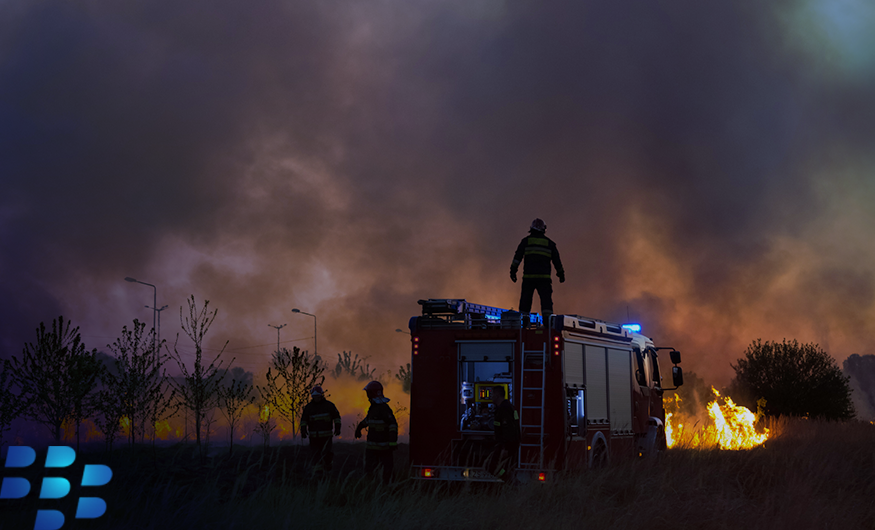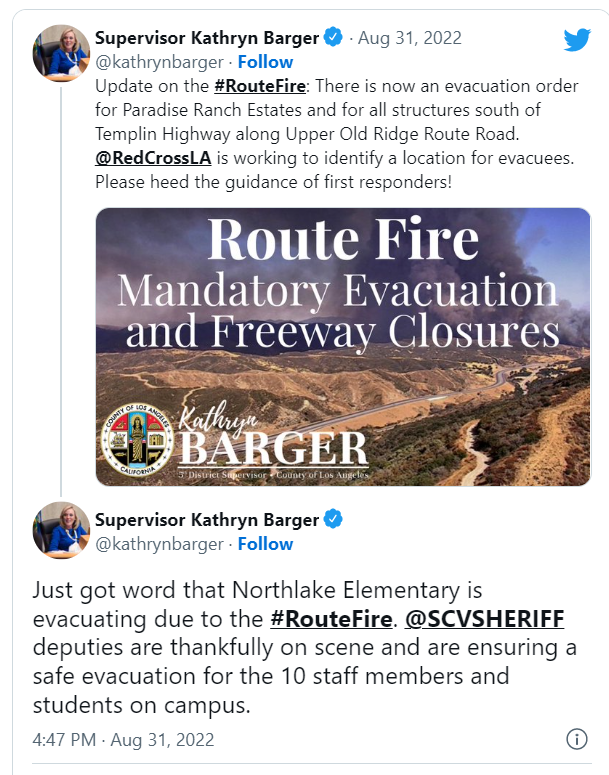Trial By Fire: What Wildfire Response Teaches Us About Crisis Communications
Wildfire outbreaks cause panic and disruption as flames burning in dry grasslands and forests move into nearby communities, displacing people, their pets, and the natural wildlife.
In the United States, a recent fire (still burning at the time of this post and 87% contained) north of Los Angeles shut down a stretch of Interstate 5 — a major artery that runs from Mexico to Canada. The blaze led to urgent tweets about mandatory evacuations that included an elementary school too close to the flames.
Things like this are not just happening in California. Wildfires are also burning in places like Spain, Canada, and France where each government is declaring a state of emergency.
As a retired police commander who worked closely with colleagues in the fire and ambulance services, my thoughts go out to the emergency responders who are dealing with the fires head-on, and also to those communities that are affected.
My background also tells me something else here: In a quickly developing wildfire situation, a major obstacle to fighting the fire and evacuating homes and schools is a lack of clear and coordinated communication.
If you are a firefighter, you understand it often becomes inevitable to call in mutual aid from across the region, the country, or sometimes neighboring countries to deal with a large-scale incident.
As a first responder, I saw that one of the biggest obstacles slowing our reaction time at large-scale events was a lack of unified communications. This is particularly significant when emergency services are brought in under mutual aid. I have seen these challenges repeat themselves far too often.
How do those in emergency services combat the problem? The only way to accomplish this is through sharing timely, accurate, confirmed information. We cannot make our next move based on a social media post. Instead, we must confirm facts before we share and act on them. And speed is everything: These critical event scenes are complicated, fast-moving, and most essentially, they depend on rapid communication to save lives.
Where Crisis Communications Break Down
If you are in the emergency services or part of a major incident response team, you are likely well aware that response could often be faster if the right people had the right information, allowing them to act in a timely fashion. And communities need to be kept informed, particularly if they have had to leave their homes and take shelter at a rest center, with a relief organization such as the Red Cross, or with friends and family.
However, in many jurisdictions, police rely on one communication platform, while fire and paramedics have another, and ambulance crews yet another. This is often compounded by the traditional communication bottlenecks (telephone calls) required to bridge these gaps, further slowing the response.
For example, the incident commander might spend ten-minute chunks of time talking via telephone to individual commanders and specialists attending the scene, trying to gather the facts of the wildfire status, teams fighting it, evacuations and weather forecasts. In a wildfire or remote emergency, there are also challenges with different radio channels used by various agencies, particularly when calling for mutual aid.
All these things, and related complications, take time – the very thing we have least – in a large-scale wildfire event. And without a robust method of coordinating all communications, another critical thing is missing: a full audit trail.
It amazes me that in the 21st century and with all our various methods of communication, we still struggle to communicate effectively and efficiently. However, it doesn’t have to remain this way: Technology is changing the emergency response landscape.
Modern Critical Event Communication Strategy
Adopting an effective critical event management communication (CEM) strategy and platform frees first responders and agencies from siloed and bottlenecked communications. It also eliminates the risk of using consumer-grade apps, which some agencies attempt to rely on. I know this because I’ve seen professional-grade CEM systems and strategies work in practice, and I’ve experienced the powerful difference it makes.
It works like this:
- A fire response agency declares a major incident.
- With a single alert, a command center quickly and easily notifies responders and partners of the exact location, the type of incident, hazards present, access to the scene, the number and severity of casualties, and which emergency services are on the scene.
- There is no wondering if the critical event comms went out. You know because it is a two-way system: Recipients can confirm they received the message with a single click.
- You also can instantly alert members of the public in a geofenced area around the incident. Should they shelter in place? Evacuate immediately? Watch for water-dropping aircraft?
This kind of messaging platform has applications for all types of government, education, and workplace emergencies, as well. In fact, an increasing number of agencies and departments are adopting this type of CEM platform.
Moving Forward in CEM Communications
A CEM communication platform is all about getting timely and accurate information wherever and whenever you need it, then sharing it with everyone who needs to know. I’m a firm believer in providing first responders with the best tools available, to help them do their jobs — and to allow them to help the public as efficiently, effectively, and safely as possible.
Modern CEM systems are central to that goal, and I firmly believe that as a CEM provider, we at BlackBerry are materially contributing to these efforts and helping emergency services teams across the globe save lives.
Research firm Frost & Sullivan awarded the BlackBerry® AtHoc® CEM platform with the 2021 Technology Innovation Leadership Award for Safe Cities, recognizing AtHoc as a best-in-class CEM solution. And AtHoc has jointly won, with Greater Manchester Police, two UK National Technology Awards, including Mobile Innovation of the Year 2021 and Best UK Public Sector Project in 2022. AtHoc is also StateRamp authorized in the U.S.
Learn more here or follow @AtHoc.


